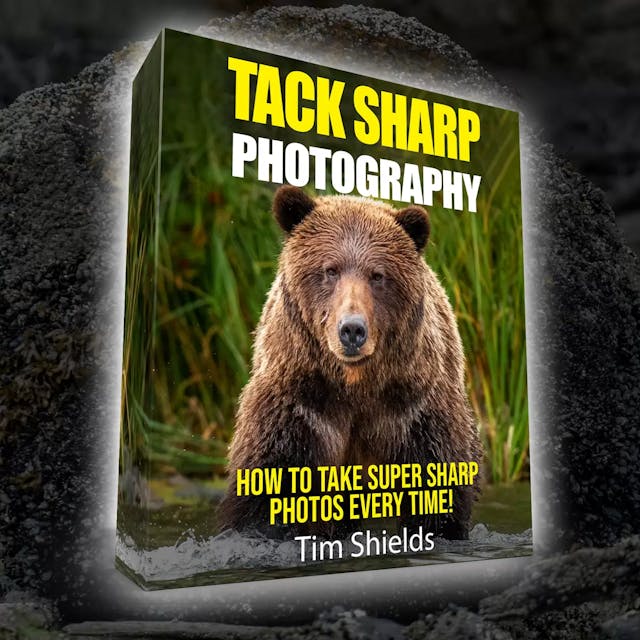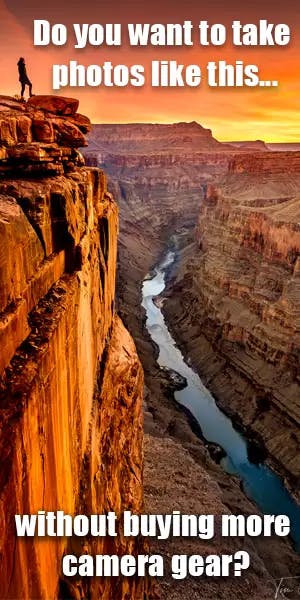When people are first getting into photography, most people stay away from used cameras and lenses. And I totally understand why. These are precision instruments, and if something goes wrong, the item can be almost a total loss.
As with everything on the used market, it’s buyer beware. That said, almost every piece of photography equipment I’ve owned was bought used. And the best part about that is that the value of my lenses has never decreased. In fact, there have been times when I’ve turned around and sold them at a higher price than what I bought them at.
Digital camera bodies are like buying cars. Used cameras will always lose value over time. Unless it’s something like an analog Leica or Hasselblad, of course. Those bodies and lenses in good condition are almost a better investment than any stock on the market right now.
So when it comes to buying equipment, there’re many factors to consider. With new equipment, you’re guaranteed to not run into any surprises — or you’ll at least be able to file a warranty request. But by buying used, you can save between 30 and 50% of the retail costs. And sometimes more if newer models have since come out.
I’m going to break this one down into a number of smaller sections so that the information is easy to parse for the average user considering buying used camera bodies. This article will have a lot of detail, so I’ve broken it down into two different posts. If you’d like to learn what to look for when buying used lenses, go to this article here. Or if you want to learn about computers, I have a handy guide for you right here.

1. Should I buy online or in-person?
This is the big one. Websites like eBay do protect the used equipment buyer. As long as you can prove that the item wasn’t exactly as described, eBay will force the seller to take the item back, and sometimes make them pay for return shipping.
This gives peace of mind that if anything goes wrong, you won’t lose money. But it is up to you to thoroughly test the equipment as soon as possible. If you find a fault even a week later, the seller could claim that you damaged the equipment, rather than from shipping or a poorly-worded listing.
If you buy used equipment in person from Facebook Marketplace, Kijiji, or Craigslist, there are other risks. The beauty of in-person sales is that you never have to worry about taxes or shipping costs. And if the equipment isn’t working properly, you won’t have wasted as much time. As well, most sellers are honest people and want you to test everything. But the reality is that it’s difficult to fully test equipment at somebody’s house, or a coffee shop. Especially without having a computer to check the images in detail.
Once the seller has the money, there’s no telling if they will offer you a refund if something goes wrong with the used equipment.

2. Is it okay to purchase a grey-market camera body?
This one comes up a lot. If you decide to go the online route for some added safety, it’s important to buy a camera body from your own continent. There are discounts to be had when buying from Asia, but the OEM repair shops in North America will not work on those camera bodies, even if they were bought new.
I’m not sure why this is, but it essentially means you’re buying an expensive piece of equipment without a warranty. It will be okay for the majority of cases, but the risk of not being able to repair your equipment is always there. As well, some insurance agencies will choose not to insure grey market equipment for that reason.
In that regard, I’ve never had a problem with any of my cameras. But that doesn’t mean it’ll never happen. If you want to make a living from your camera gear, this is a real risk to consider when deciding on grey-market equipment.

3. How do I know if a used camera is a good deal?
Buying a used camera can be difficult because you can never know for sure the state of the electronics inside. Most people on the used marketplace will tell you what they were using the camera for, and this can often be a good indication of the state of the camera.
Sports and wedding photographers will put the camera through its paces. Typically a sports shooter can take 500-2,000 photographs in a single event. Wedding photographers can do even more over a day, or multi-day event. The best users are landscape photographers or parents who bought the equipment to take photos of their kids. These types of photographers often don’t take nearly as many photos, and typically take care of their equipment much nicer.
The shutter count is listed in nearly every private sale for this reason. High counts mean the camera is well used. If the shutter is rated for 750,000 shots, and the photographer said it’s had 500,000 shots on the listing, this camera has gone through 2/3rds of its effective life and should be priced accordingly. That said, no shutter is guaranteed to fail at exactly the amount it was rated for. I’ve seen pros carrying around cameras that have taken well over a million shots, and are still firing like new.
And the opposite can happen, too. If a camera body was stored in a basement for years collecting dust, sometimes the shutter can jam up from hardening lubricants. They’ve certainly come a long way since film camera days, but nothing is immune to the effects of time.

4. What are the indications of a poorly treated used camera body?
So the best indication of how well a camera was treated is to look for scratches, and signs of moisture. If there’s a lot of dings, or bubbling in the finishing, that user likely didn’t care much for their equipment. Cameras are built to take some abuse — especially the professional-grade cameras. But over time, they’ll still be more likely to fall apart in one way or another.
Another sniff test is to look for signs of stripped, loosened, or changed screws. Most cameras have black-painted screws, which will chip slightly if a repair is attempted. If you see silver in the screws, or around the edges, aside from the potential for faulty repairs, it might mean the warranty is now void. And this point, of course, is one that you won’t know unless you run into trouble and have to send it in for repairs of your own. The Canon, Nikon, or Sony shops might not even touch it if they see signs of unauthorized repair.
The last thing to look at is the sensor. If it’s a mirrorless camera, they are prone to getting an insane amount of dust on the sensor. Meaning that they have to be cleaned fairly regularly, especially for commercial usage. But if they’re cleaning the sensor themselves every couple of months, there’s always a chance to scratch the sensor, making a permanent defect that’ll show in every single picture taken.
If you see any of these signs, the best course of action is to leave it behind. Unless you’re willing to get a discount of the increased risk, you may just be buying a lemon.

5. Was it used for video, or photo?
A used camera with a low shutter count can be very enticing. I’ve known many people who see a discounted camera with a low shutter count and are ready to buy in an instant, thinking it has a long life left.
So if you see this, the first question to ask is if the camera was used for photography or videography? Videography doesn’t use the camera shutter, but it does create a lot of heat. And that heat can slowly damage the wiring or break down adhesives inside the camera, making it far more prone to failure over the long term.
If this is the case, and you see the seller has used the camera for 3 years or longer, it may be a good idea to pass on the deal.
Once you’ve got your camera, what’s the next step?

Upgrading your equipment is a lot of fun. The first thing I do every time I get new equipment is head outside and test it on a trip to the mountains! When you’re ready to learn how to get the maximum potential out of all of your equipment, you can sign up for my free online web class. In that free course, I’ll teach you my four-step process for taking world-class photographs! This is the same process that I’ve developed over my years as an award-winning fine-art landscape photographer. Sign up today to start taking better photos!




